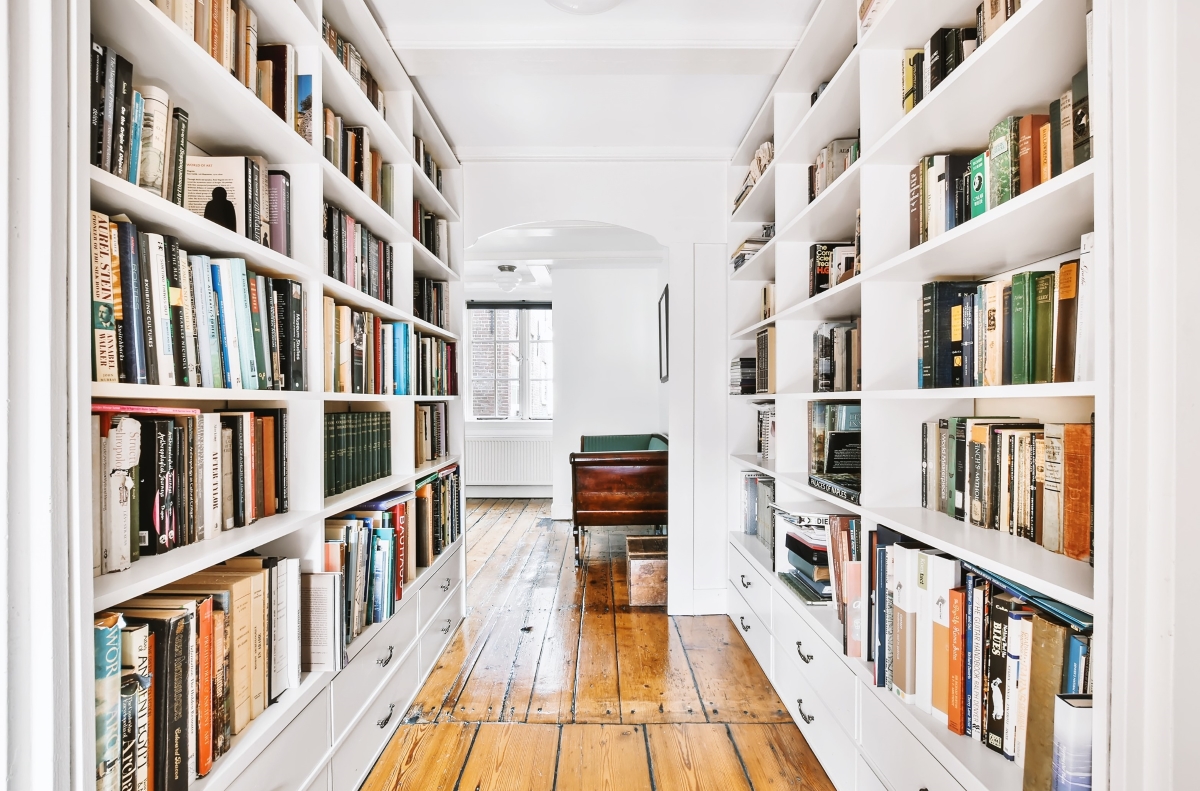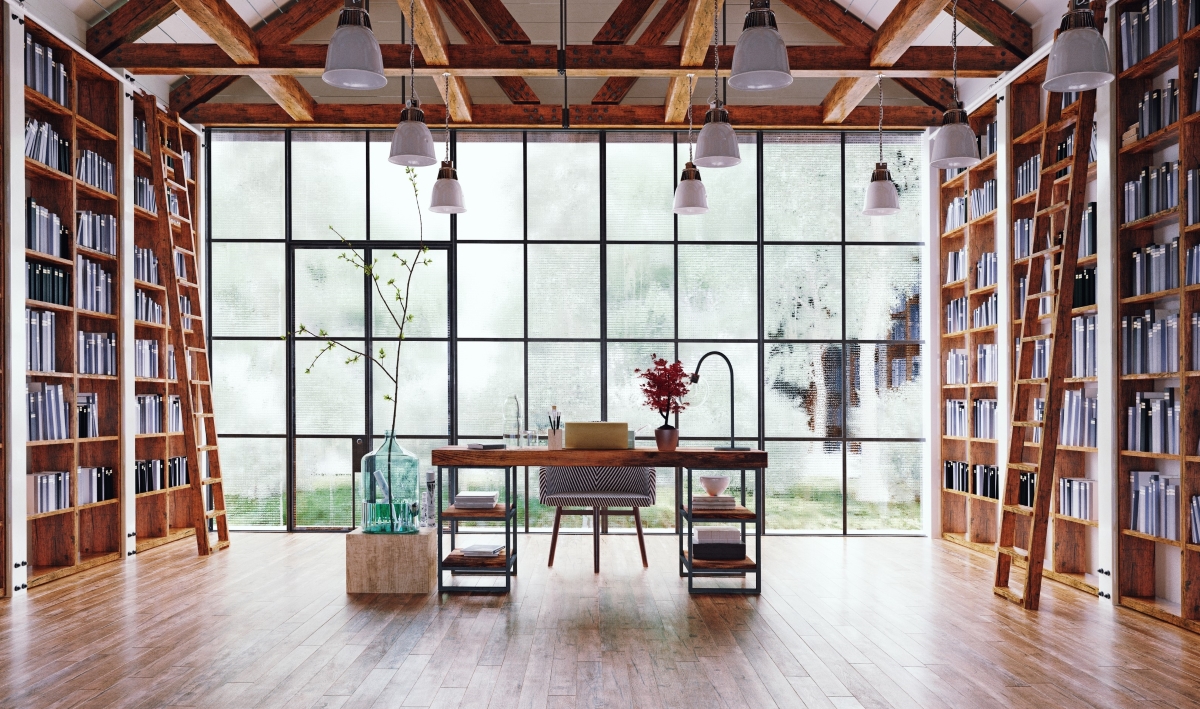
Creating a home library offers a perfect blend of comfort, relaxation, and intellectual stimulation, making it an ideal endeavor for seniors. A well-curated collection of books can offer endless opportunities for learning, enjoyment, and even a sense of personal fulfillment. Whether you’re a lifelong book lover or someone looking to reignite your passion for reading, setting up a home library is a fulfilling and rewarding project.
This guide will walk you through the essentials of creating a home library that suits your tastes, promotes both enjoyment and learning, and offers a space where you can escape into the world of books.
1. Defining Your Space: Finding the Perfect Spot for Your Library

The first step in setting up a home library is identifying the right space. This doesn’t require an entire room—it could be a cozy corner of your living room, a nook in your bedroom, or even a designated section of a hallway. The key is finding a spot that feels peaceful, comfortable, and conducive to reading.
Consider factors like lighting and accessibility when choosing the location for your home library. Natural light is wonderful for reading during the day, but be sure to have sufficient lamps or overhead lights for nighttime reading. Ensure that the space is easily accessible and that your bookshelves or storage solutions are at a comfortable height, making it easy to reach for your favorite books without strain.
Invest in comfortable seating that supports long reading sessions. An armchair with good back support or a cushioned chair with ottomans can make the space inviting and ergonomic. For added comfort, consider including soft throw blankets, pillows, and perhaps a small side table for tea or coffee while you read.
2. Curating Your Collection: Selecting Books That Spark Joy and Learning

One of the most exciting parts of setting up a home library is curating your collection of books. The best home libraries are deeply personal, reflecting the interests and passions of the reader. For seniors, this might mean revisiting classic literature, exploring new genres, or diving into non-fiction topics that spark curiosity and learning.
Start by reflecting on what you enjoy reading most. Do you love historical fiction, mysteries, or memoirs? Or perhaps you’re drawn to non-fiction books about history, science, or philosophy. Your home library should be a reflection of your unique tastes, so take the time to build a collection that brings you joy.
For seniors looking to continue lifelong learning, consider curating books that challenge your mind and expand your knowledge. Non-fiction titles on subjects like world history, art, politics, or science can provide hours of intellectual stimulation. If you’re interested in more interactive learning, look for books that teach new skills—whether it’s gardening, painting, or learning a new language.
Don’t hesitate to mix in lighter reads or fun genres like mystery novels or cozy romances. A good home library balances challenging reads with pure entertainment, giving you the flexibility to choose a book that fits your mood.
3. Large-Print Books and E-Readers: Enhancing the Reading Experience

As vision changes with age, many seniors find large-print books or e-readers with adjustable font sizes incredibly beneficial. Large-print books are designed with bigger fonts to make reading easier on the eyes, reducing strain and fatigue. These are widely available for most genres and authors, so you won’t have to sacrifice your favorite reads for comfort.
E-readers like Kindle or Nook are also great tools for seniors, as they allow you to customize font size, lighting, and even line spacing. E-readers also provide the convenience of carrying hundreds of books at once, making them a space-saving solution if you have limited room for physical books. Plus, many public libraries now offer free e-book borrowing through apps like OverDrive or Libby, giving you access to a vast collection without leaving your home.
For tech-savvy seniors, audiobooks are another fantastic option. Audiobook services like Audible or free public library apps allow you to enjoy books while resting your eyes. Whether you’re cooking, walking, or relaxing in the garden, audiobooks let you dive into stories and knowledge in an entirely new way.
4. Organizing Your Library: Finding a System That Works for You

Once you’ve curated your collection, it’s important to organize your books in a way that makes them easy to find and enjoy. There’s no one-size-fits-all approach to organizing a home library, so consider what system will work best for you.
Some people prefer to organize their books by genre, keeping all their fiction titles in one section and non-fiction in another. Others like to arrange books alphabetically by author or title for easy access. If you’re drawn to aesthetics, you might want to organize your books by color or spine design, creating a visually appealing display.
If your collection is modest, a simple bookshelf might suffice. However, for larger collections, consider adding additional shelving or bookcases to ensure you have room to grow. Make sure the bookshelves are sturdy and stable, especially if they are tall, and avoid overloading shelves with too many heavy books at once.
For those with limited space, wall-mounted shelves or stackable storage units can offer a clever solution. You can also use decorative baskets or bins to store magazines, journals, or smaller paperbacks. No matter what method you choose, the goal is to create an organized and easily accessible system that invites you to spend time in your library.
5. Incorporating Lifelong Learning: A Library for Knowledge Seekers

For many seniors, a home library is not only a place to read for enjoyment but also an opportunity to continue learning. Curating books that support lifelong education can provide both mental stimulation and personal growth.
Consider adding books on topics that pique your interest, whether that’s world history, scientific discoveries, or biographies of influential figures. If you’ve always wanted to dive deeper into a subject like art history or astronomy, now is the perfect time to gather books that feed that curiosity.
For those who enjoy hands-on learning, include how-to books that offer practical knowledge. Cooking, home improvement, and craft books are great additions that can inspire new hobbies and skills. Books about health, fitness, or wellness may also serve as valuable resources for maintaining physical and mental well-being.
If you’re part of a book club or enjoy discussing literature with others, having a wide variety of books on hand can be a great way to share knowledge and recommendations with friends and family. This can foster a sense of community and encourage thoughtful discussions.
6. Creating an Atmosphere: The Joy of Reading in Comfort

Setting up a home library isn’t just about the books; it’s about creating an inviting atmosphere that encourages reading. The ambiance of your library space can greatly influence how often you spend time there, so it’s worth considering the small details that make the room cozy and welcoming.
Lighting is crucial for a reading environment. If you have natural light during the day, that’s fantastic, but also ensure you have adequate lighting for evening reading. Soft, warm lighting can create a relaxing ambiance, while task lighting focused on your reading area will reduce eye strain.
Incorporating personal touches, such as family photos, artwork, or plants, can make the space feel more personal and engaging. You might even want to create a small reading corner with a comfortable chair, footstool, and blanket, offering a retreat within your home.
For added comfort, consider temperature control in the room. Whether it’s opening a window for fresh air or using a fan or heater depending on the season, making the space physically comfortable will enhance your reading experience.
7. Maintaining and Updating Your Library

A home library is a dynamic space that evolves with time. As you continue to explore new interests and discover new authors, your library should grow and change. Periodically assess your collection to make room for new books and to pass along titles you no longer need to friends, family, or local libraries.
Staying up to date with new releases, author recommendations, or seasonal reading lists can keep your library fresh and exciting. Consider subscribing to literary magazines or following book review blogs for inspiration.
Additionally, rotating the books on display can breathe new life into your space, drawing attention to forgotten favorites or books you’ve been meaning to read. You might also consider creating a seasonal reading list, pulling books that align with your current mood or interests.
Conclusion

Setting up a home library for seniors is more than just collecting books—it’s about creating a sanctuary for enjoyment, learning, and relaxation. Curating a collection that reflects your tastes and interests, organizing it in a way that suits you, making the space comfortable, and inviting your home library will become a cherished part of your daily life.
Whether diving into a new novel, revisiting old favorites, or exploring educational topics, a home library offers a world of possibilities at your fingertips. Take the time to build a collection that inspires joy, growth, and reflection. The rewards will be well worth the effort.





